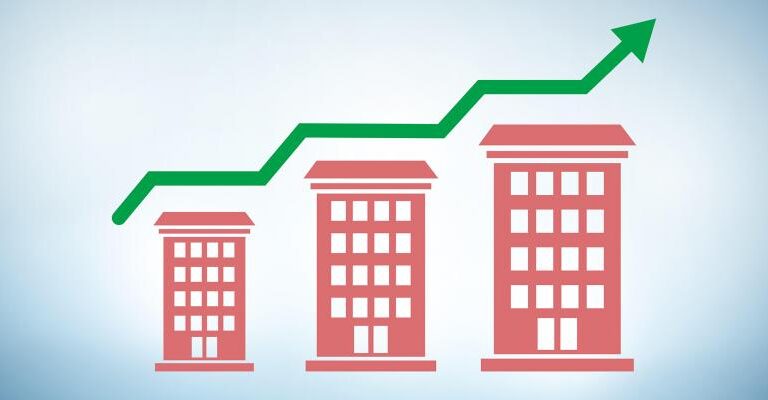The easing of U.S. travel restrictions is likely to fuel more cross-border transactions in the coming months.
Foreign investors are shaking off pandemic-related constraints and jumping back into the U.S. commercial real estate market.
Uncertainty on how the pandemic might impact existing assets, lack of for-sale inventory and travel restrictions forced buyers to slow the pace of acquisitions during the past 18 months. As a result, significant levels of foreign capital built up on the sidelines that is now seeking to deploy. And the U.S. real estate market is well-positioned to capture that capital.
“The U.S. as a whole remains one of, if not the most sought-after global real estate market that is backed by the strong fundamentals and economic strength of the recovery coming out of the pandemic,” says Richard Stevenson, managing director of global cross border investment at Savills. Global investors searching for yield were targeting U.S. real estate in a low interest rate environment was a common theme prior to the pandemic. That interest is likely to return and be bolstered by the current inflationary environment. Across different international capital sources, the attraction to U.S. real estate spans all major markets, asset types and risk profiles, he adds.
Some sources of international capital were hamstrung by the simple logistics of not being able to travel to the U.S. to visit properties, notes Riaz Cassum, executive managing director, capital markets, global head of international capital coverage at JLL. U.S. travel restrictions that required non-U.S. residents to have proof of vaccination and a negative COVID-19 test were lifted in November after some 20 months. Cassum expects the lifting of travel bans to unleash more buying activity. “I know of a couple of European investors and lenders who were on the first flight they could be on and are in the U.S. now looking to have meetings,” he says.
Certain capital sources have been more affected than others by travel restrictions. Canadians, South Koreans and Singaporeans are among those that have remained active buyers. Canadian and Singaporean investors, for example, have benefited from having teams based in the U.S. Manwhile, some South Korean investors continued to travel to the U.S. even though it involved quarantines when they returned to their home country, notes Cassum. Meanwhile, German pension funds were more negatively impacted by travel bans because they are required to see the real estate and have a certified appraiser visit a property prior to acquisition.
Activity has already noticeably picked up in third quarter. For example, Commerz Real is reportedly under contract to buy the 100 Pearl St. office building in Manhattan for $850 million. JLL is working on an office building sale in Washington, D.C. where Deka is the buyer, and Crain’s Chicago reported that German investor Union Investment Real Estate recently purchased a high-end retail property in Chicago for $120 million. “I think that the first quarter and first half of next year will be very, very strong,” says Cassum.
Global investors increase allocations
The U.S. typically ranks as the top country among international investors for real estate investment opportunities. According to the 2021 AFIRE International Investor Survey released in May, three in four investors expected their volume of US real estate investment activity to increase in 2021. “The U.S. continues to be an important market and one where capital from around the world wants more exposure,” says Cassum.
According to Real Capital Analytics, the 12-month trailing volume of acquisitions from global capital sources reached $33.7 billion in third quarter, which is the highest level since first quarter 2020 when the volume was $36.6 billion. As a percentage of overall sales transactions, cross-border investment into the U.S. has remained fairly steady over the past two years at 8 percent to 9 percent, according to Real Capital Analytics.
One factor that may be weighing on foreign buying activity is the competitive market, particularly in high-demand sectors such as industrial and multifamily. “It’s not that there is a lack of interest on the part of international investors, it’s that there has been so much domestic demand for product,” notes Jonathan Woods, chief operating officer at Excelsa. As the market has gotten more competitive, it has been more challenging for international investors to meet the terms and timetables unless they have substantial resources or boots on the ground to help them deploy capital, he says.
In addition, cross-border transaction volume may be larger than what is showing up in industry data. There is a significant amount of international capital that flows into U.S.-based funds that is difficult to track. For example, Excelsa manages a variety of investment funds focusing on multifamily investments, including feeder funds, with capital coming primarily from HNWIs from the Middle East and the U.S. Excelsa is seeing more interest from its HNWI investors based in the Middle East. Political stress in the Middle East tends to drive more interest in U.S. investments as investors search for good risk-adjusted returns, as well as portfolio diversification and stability.
Buyers adjust strategies
Global buyers looking to deploy capital in the U.S. are not necessarily picking up where they left off pre-pandemic. Investors took time over the past 12 to 18 months to reassess their investment strategies and allocations. For example, Excelsa is now more heavily focused on suburban garden style apartments. “As class-B workforce and urbanity really came under pressure during COVID, we have expanded into other geographies. We also have focused more on lifestyle renters rather than what we call necessity renters with more class-A core and core plus properties,” says Woods.
Investors are evaluating changing market dynamics and potential risks ahead. According to the AFIRE International Survey Mid-Year Report that was released in October, the top concern for factors impacting U.S. real estate activity is higher construction costs. Eighty-five percent of survey respondents rated construction costs as somewhat or very concerning. Changes in asset pricing and reduce office demand due to remote working also rated as concerning for 72 percent of respondents, followed by changes in tenant demand at 67 percent.
Investors are shifting allocations to property types where they expect to see more growth, which has sparked more interest in logistics, data centers, life sciences and multifamily. Hospitality and retail were two of the hardest hit sectors during the pandemic, and as such, international investors remain cautious in those sectors. Improvement in the economy and return to work is giving investors more confidence in the office market, and some international investors are once again willing to look at necessity retail. Another trend that was emerging prior to the pandemic was the rise of high-growth secondary markets. “We are seeing more capital interested in going to those markets that are benefiting from the high economic and demographic growth,” says Stevenson.
Investors in the 2021 AFIRE Survey rated Austin, Boston, Dallas, Atlanta and New York as their top cities for investment in 2021. Investors generally like those markets for the population and job growth that is occurring, as well as favorable cost of living and/or tax climate that is helping to attract people and employers. “They are not abandoning the gateway markets, but they now have enough exposure in gateway markets and they feel like there is better growth and opportunity in these smaller non-gateway markets,” adds Cassum.
Source: Read Original Article






